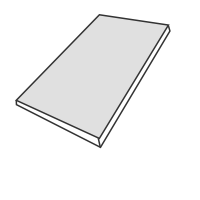
Health Limit Road
The group adheres to the original intention of "brand, environmental protection, and quality"
Adhering to independent research and development innovation
Introduce green, healthy, and environmentally friendly products to consumers
Scroll down for more content
Aldehyde Purification Technology
Development Time: 2015
Developer/Personnel: Treezo
Application Products: Formaldehyde Removal Product Series
Technical Principle
Made from active biological proteins, photocatalysis, starch, etc., using biological enzyme technology, adding a super-permeable formula, after a complex special process, it can quickly neutralize and react with harmful substances such as formaldehyde in materials containing pollutants. The product itself is non-toxic and harmless, with a neutral PH value, and has a unique adsorption and purification ability for harmful gases such as formaldehyde, toluene, and xylene.This technology captures formaldehyde biologically. Regardless of how long formaldehyde is released, biological nanoparticles (active protein enzymes) continuously adsorb on materials containing formaldehyde to completely eliminate it.
Plant Glue Technology
Development Time: 2016
Developer/Personnel: Treezo
Application Products: Soy Scented Board Series Products
Technical Principle
Soybean gum products use renewable natural plant resources—soybean meal remaining after soybean oil extraction as raw materials, without adding toxic or harmful substances, to eliminate the release of toxic and harmful substances such as formaldehyde and phenol.Supporting evidence: The free formaldehyde content is <0.05g/kg according to third-party testing, which complies with the limit of harmful substances in indoor decoration materials adhesive GB 18583-2020, thereby achieving zero formaldehyde addition in the board production process.
Antibacterial Technology
Development Time: 2015
Developer/Personnel: Treezo
Application Products: Antibacterial Product Series
Technical Principle
By appropriate proportioning of TiO2 and antibacterial compounds such as silver, copper, and zinc, the photoelectrons generated by TiO2 under light can reduce silver and copper ions. In this way, the silver or copper metal precipitated in a dark environment can exert its antibacterial effect, decomposing bacteria, molds, organic matter, etc., into non-toxic gases. Thus, the antibacterial effect of TiO2 can be complemented by the combination with silver, copper, and other ions.
























